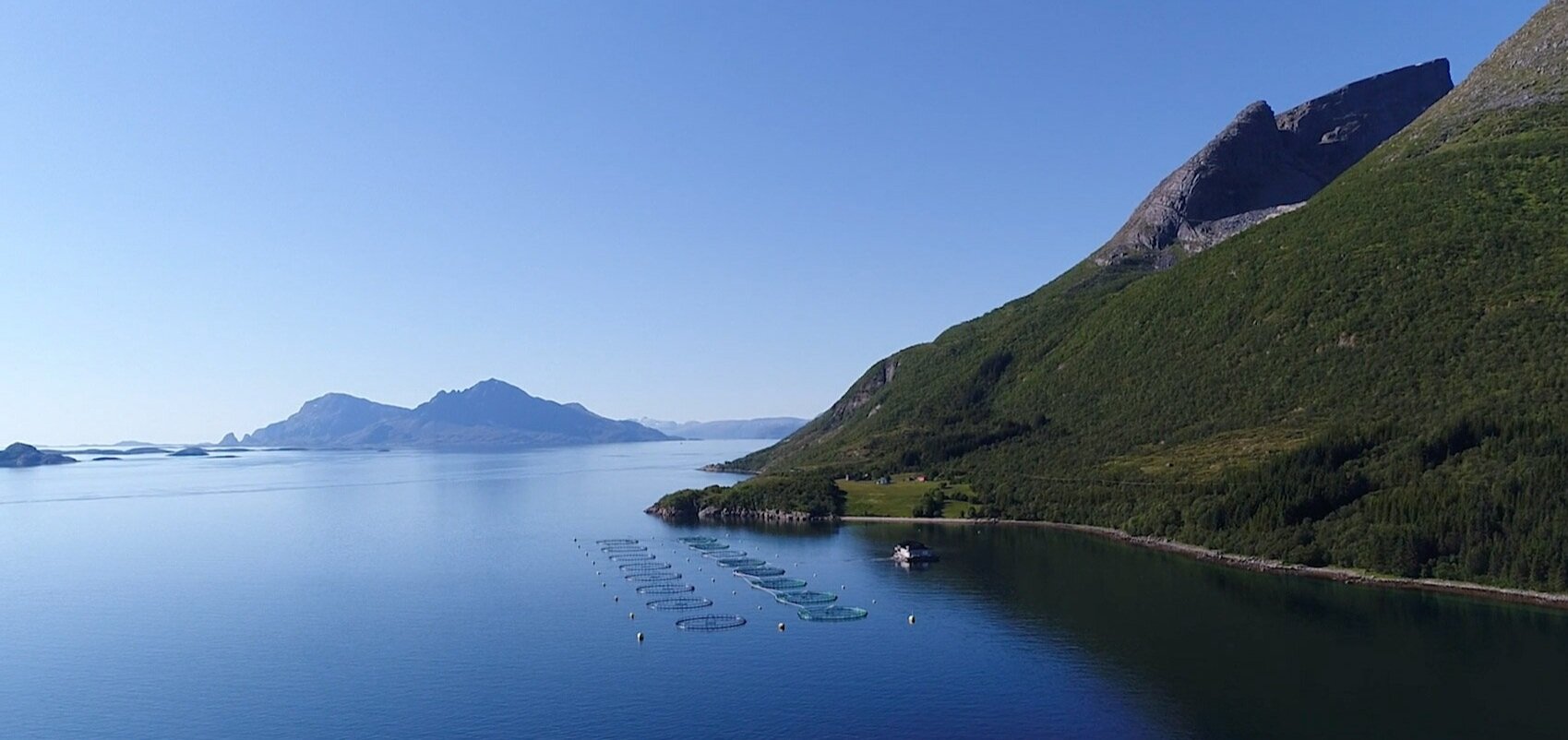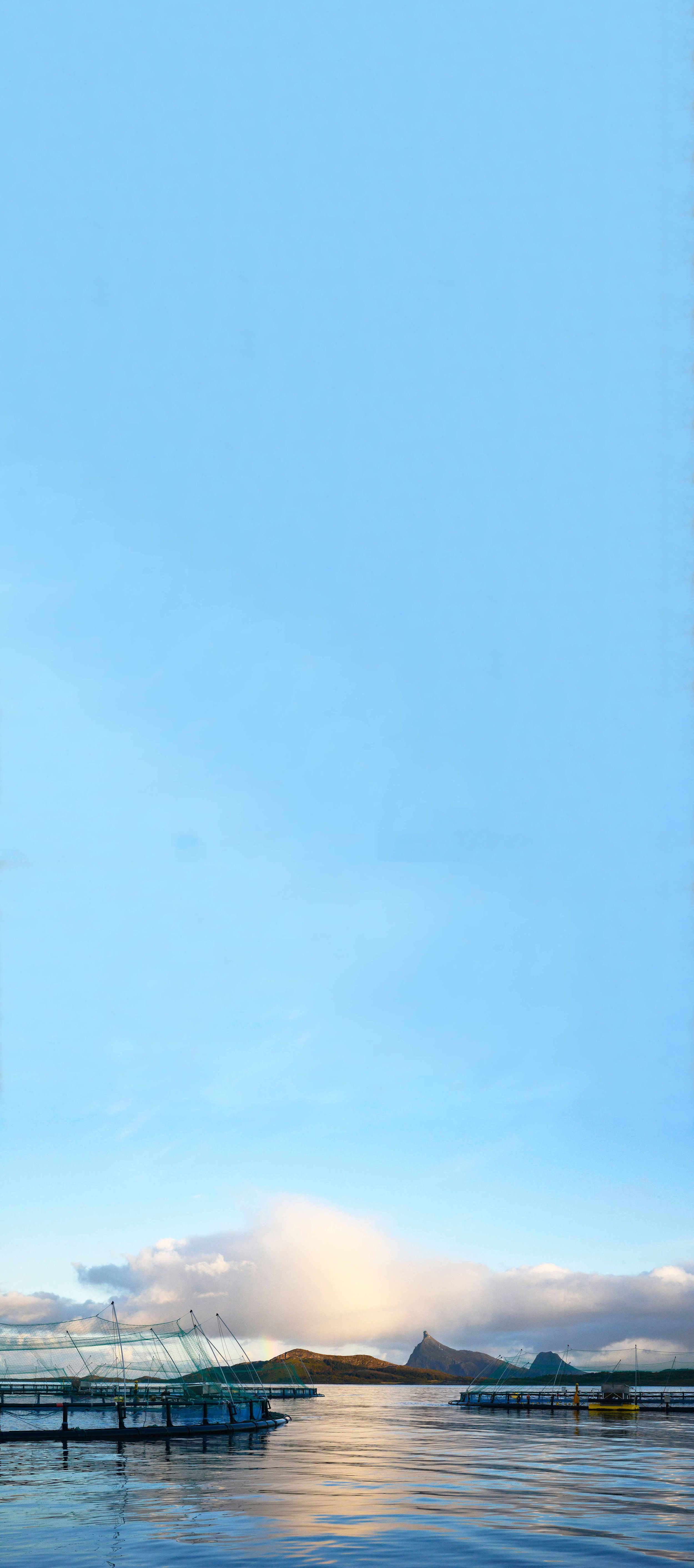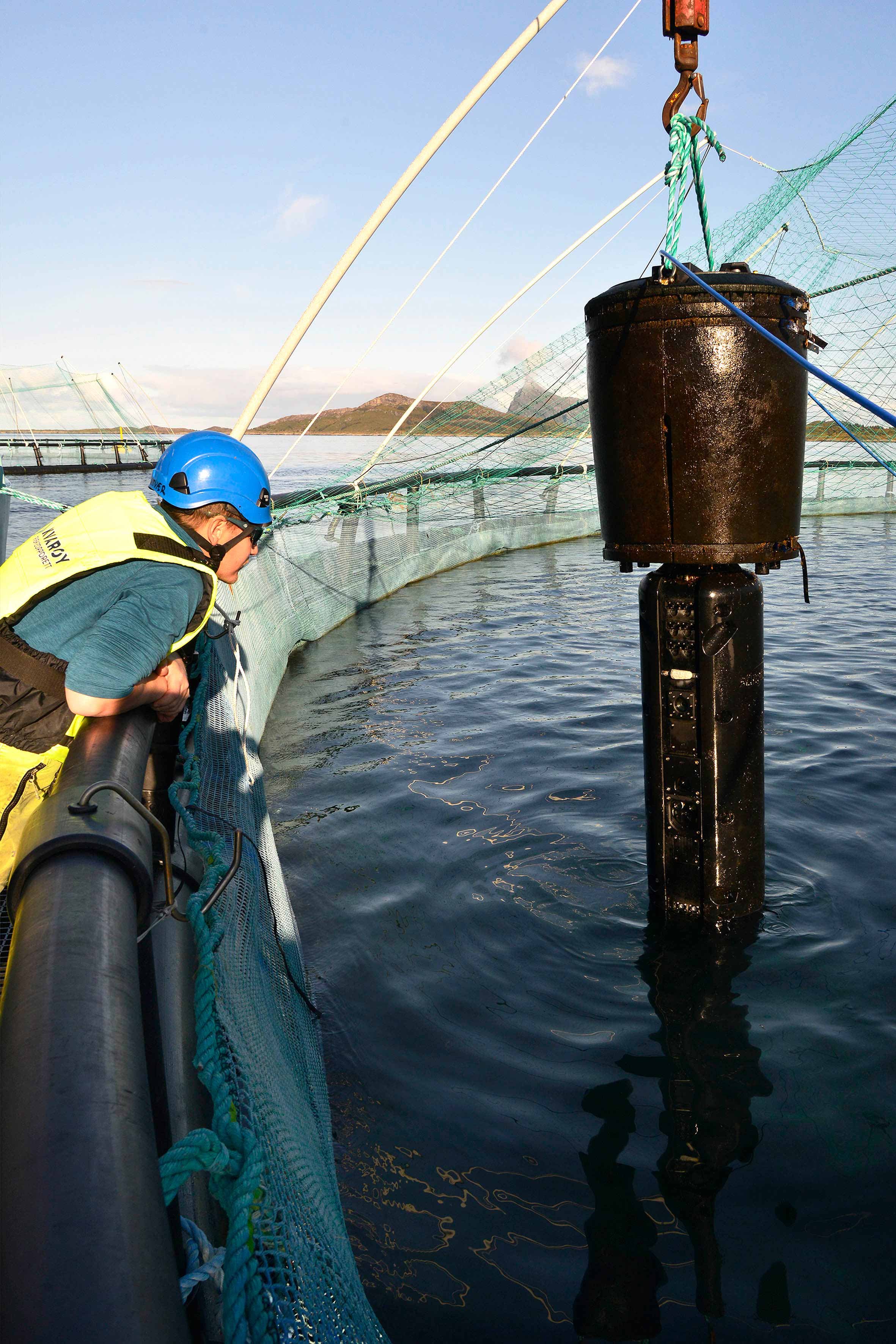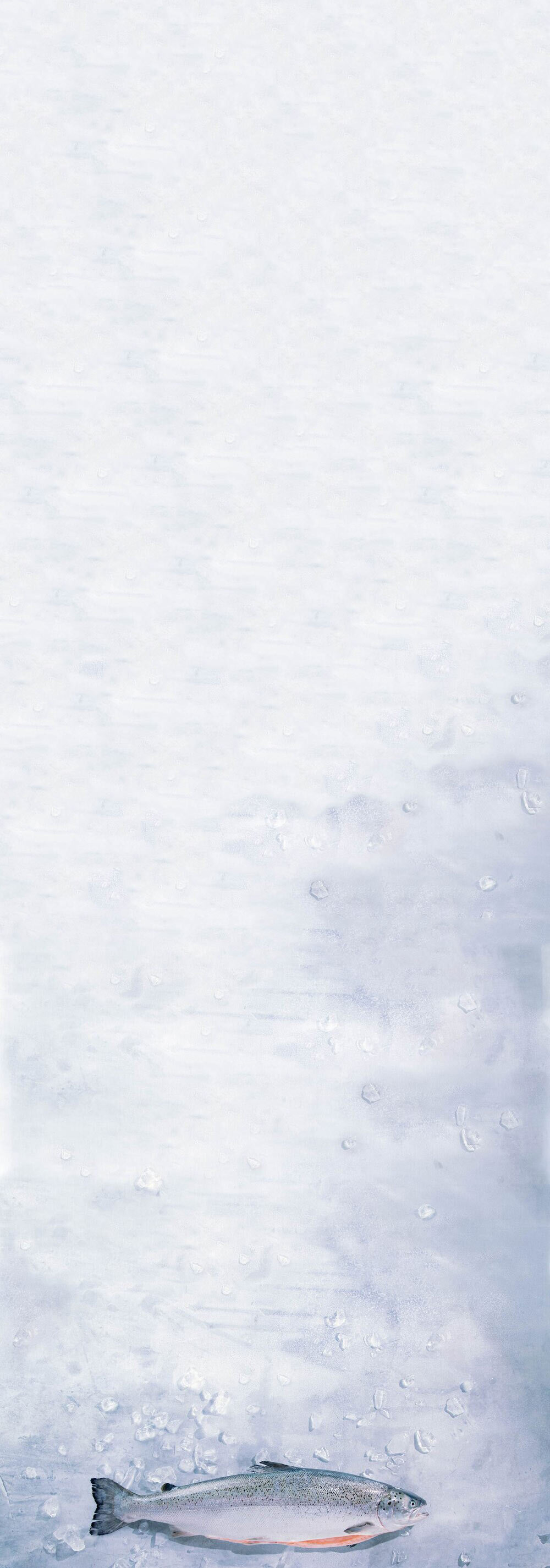
Pristine
Waters
Equals
Pristine
Fish
“We Must Leave The Environment In The Same Or Better Shape Than When We Began.”
—Alf-Gøran Knutsen / Kvarøy Arctic / CEO
The water off Kvarøy belongs to the people of Norway. Official standards must be met. But we have even more stringent standards of our own. We stopped using copper in our nets over 20 years ago. Our pens are fallowed 3 times longer than required. We farm for 16 months and allow the water to be undisturbed for 6 to 8 months – by choice.
REDUCING OUR FOOTPRINT
It isn't easy to run a sustainable operation. We realize everything we do effects our environment and local resources. We are committed to doing more today to ensure the impact of our company and our industry is less in the future.
CARBON FOOTPRINT
| Product | Carbon Footprint |
|---|---|
| Kvarøy Arctic | 2.1kg CO2eq/kg |
| Organic Salmon | 2.5kg CO2eq/kg |
| Farmed Salmon (Overall) | 3.5kg CO2eq/kg |
The total amount of emissions with effect on climate change (greenhouse gases) to produce one kilo of farmed fish. Emissions are expressed as equivalents to carbon dioxide (CO2).
WATER FOOTPRINT
| Product | Water Footprint |
|---|---|
| Kvarøy Arctic | 1,500L/kg |
| Organic Salmon | 1,500L/kg |
| Farmed Salmon (Overall) | 2,000L/kg |
The total amount of fresh water used to produce one kilo farmed fish. Fresh water use is expressed in liters (L).
DATA COURTESY OF BIOMAR GROUP
First To Use Blockchain For Transparency
Food buyers and their customers want to know where their food comes from, how it’s raised, and what’s in it – especially seafood. As the first in our industry to utilize blockchain technology, we’re promoting access to pure, unaltered data collected directly from the source to allow people to buy what they truly want.

Arctic Stingray With Lasers.
Yes, It’s Different Up Here.
Sea lice are the scourge of farmed salmon. They are harmful to the fish. Unchecked, the proliferation of sea lice would threaten the health of the aquaculture industry as a whole.
While some farmers might use antibiotics, we’re anti-antibiotics and have searched for more healthful, innovative ways to address the issue.
And so began our partnership with Stingray Marine Solutions and their laser-based sea lice abatement and monitoring system, which will be implemented in every Kvarøy Arctic pen by early 2022. It’s leading edge technology at the edge of the arctic circle – which means it’s perfect for us!
Photo: Stingray / Nils-Petter Aaland

Photo: Stingray / Nils-Petter Aaland
FJORD 2.0: LASERS IN AQUACULTURE
The Stingray laser technology is perfect for all salmon farmers who see the well-being of the fish as an intrinsic part of a successful enterprise.
As salmon swim by, the laser and camera unit detects, logs, and zaps away (pulses) any sea lice on them. The salmon, having mirror-like skin, are not affected as their skin reflects the laser. The unfortunate sea lice absorb it. Brilliant. It creates zero impact on the fish and the ecosystem.
As we phase out the use of lumpsuckers, life with lasers will be as natural for our salmon as swimming, eating and enjoying the cool waters of the fjord.
The potential of laser technology will help us continue our quest to create the healthiest, most sustainable and humanely raised salmon possible.
“We were first movers in a lot of ways. We’re searching for innovative ways to become better all the time.”
— Havard Olsen
Kvarøy Arctic
Operations Manager

Kvarøy Arctic Is A Net Producer Of Fish Protein
The Fish In / Fish Out ratio represents how many fish used for fish oil and fish meal it takes to produce a farmed salmon. We wanted to improve upon the industry gold standard of 1:1, the equivalent of using one wild fish as feed to raise one farmed fish. Sustainability to us meant more than “a wash.” With changes to our feed that includes the use of microalgae, our FIFO ratio is 0.48:1, meaning we use less than half a fish to produce a full grown, healthy Kvarøy Arctic salmon.
Most innovation in our industry has been in processing. By putting the same energies against feed research and development, Kvarøy Arctic’s journey to sustainability continues to move the entire industry forward.
NET FISH Producer
| Product | Ratio |
|---|---|
| Kvarøy Arctic | <0.5 : 1 |
| Farmed Salmon (Overall) | 1.5 : 1 |
| Organic Salmon | 2-4 : 1 |
| Wild Salmon | ~10 : 1 |
The total amount of forage fish needed to produce one kilo of farmed fish. A ratio below 1 : 1 indicates net fish production.
DATA COURTESY OF BIOMAR GROUP
Cleaner Feed For Healthier Fish
Of all our efforts, perhaps none is as impactful as our insistence to develop cleaner, healthier, more environmentally responsible feed.
“It Hasn’t Always Been Good Business To Be More Sustainable – Taking On More Costs For Feed Which Is 50% Of The Total Production Costs. But We Do It Anyway Because The Fish Are Only As Good As The Food They Eat.”
—Gjermund Olsen / Kvaroy Arctic / Production Manager
With Biomar, we invested in developing a new feed using the trimmings from processed North Atlantic wild fish caught in Marine Stewardship Council Certified fisheries which are then cleaned to dramatically reduce PCBs and other environmental contaminants. The result? Salmon that is 339 times cleaner than the FDA specification of 2 parts per million with about 1/9th the PCBs found in other farmed salmon.

Unlocking the Power of
Data Intelligence
We’ve partnered with Manolin, a team of mission-driven technologists and scientists focused on solving the most critical challenges within the aquaculture industry. By unlocking new insights through human innovation coupled with machine-driven efficiency, they're redefining how software can help sustainably grow the sector.
Their Artificial Intelligence (AI) driven platform both minimizes issues and maximizes outputs in order to create a farming future where outputs in the ocean are predictable, scalable, and protectable. The integration of this software helps our team save time and resources by streamlining all farm site data into one centralized platform, where we now have the ability to automate sustainability reporting, migrate data easily into new systems, and accelerate aquaculture feed research faster than ever before.
Read more here about the benefits of how we're using Manolin’s data intelligence
to overcome barriers and unlock new opportunities on our farm.


